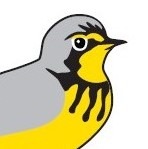Conserving Birds and Critical Habitat in the Fraser River Estuary, an Important Bird and Biodiversity Area
In addition to being Canada’s largest salmon-producing river, the Fraser River Estuary supports over 1.7 million birds annually, making it the most productive bird habitat in Western Canada. The Estuary is also an internationally significant habitat – its continued health is an important contribution towards addressing the global biodiversity crisis.
To conserve global biodiversity, several leading international conservation organizations have been working to identify “Key Biodiversity Areas (KBAs)” across Canada. The Fraser River Estuary is among the first potential KBAs in Canada to be identified due to the large number and diversity of birds and other wildlife it supports. For example, the coastal habitats of the Estuary support over 1.4 million shorebirds such as Western Sandpipers; 240,000 waterfowl, such as Snow Geese; and approximately 4,000 raptors, such as Barn Owls.
Despite its incredible ecological value and the acknowledged need to halt and reverse the loss of biodiversity the Fraser River Estuary has been identified by the Government of Canada as a priority location for ongoing heavy industrial development. As part of a plan to expand Canada’s trading capacity the ecological condition of the Fraser River Estuary is being compromised by shipping related infrastructure.
How You Can Help
The birds of Fraser River Estuary need your help. The main threats to birds in the Estuary are habitat loss and climate change. Immediate action is needed from all levels of government to halt planned shipping infrastructure development and establish a conservation management plan for the Fraser River Estuary.
Ask Your MP to Protect Fraser Estuary from additional Shipping Infrastructure.
To achieve a sustainable future the Fraser Estuary Management Plan would need to enable indigenous people and communities to lead a regional cumulative impact assessment and develop a plan to address the specific issue of habitat loss due to increased shipping infrastructure.
Community partners are seeking creative solutions to ensure agriculture continues to be practiced in a bird-friendly manner, building on the legacy of farmland stewardship practiced by the farmers of Delta. Strengthening existing beneficial practices while enhancing Indigenous-led conservation on the delta and advocating for ecosystem-based climate adaptation are just some examples of the work underway.
We need to restore the ecological function of the Estuary’s coastal wetlands – for birds and people.
To stay up-to-date on emerging conservation issues in the Fraser River Estuary, follow Birds Canada on social media (@BirdsCanada_BC on Twitter).

